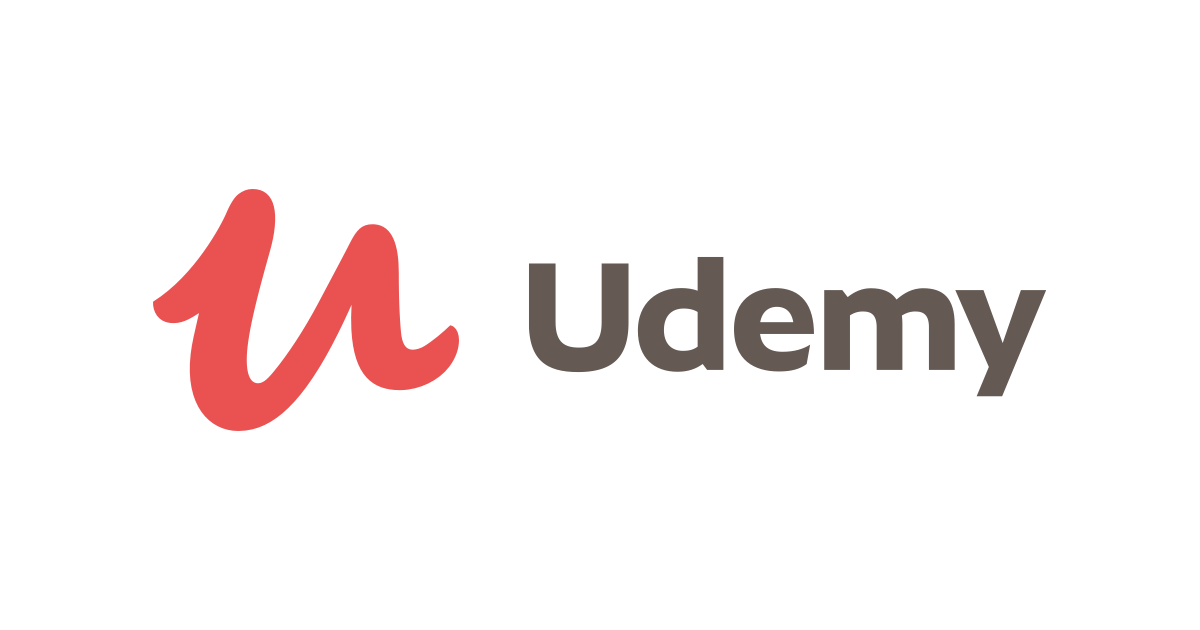- Length
- Cost
- Curriculum
- Course Breakdown
- Top 9 Best Geometry Courses 2023
- 1. Become a Geometry Master
- 2. Introduction to Geometry
- 3. Basic Geometry and Measurement
- 4. High School Geometry
- 5. Geometry Basics to Advanced
- 6. Master Geometry: Full Curriculum With Practice
- 7. Geometry – Math – GMAT/GRE/SAT/ACT/CAT
- 8. Computational Geometry
- 9. Computational Geometry
- FAQ
- Everything You Need to Know to Succeed in Your Online Geometry Course
- Make Your Math Skills Acute From Any Angle
Whether you’re an aspiring architect, a lifelong math whiz, a student seeking help for an upcoming exam, or you just want to review all of those formulas and theorems you vaguely remember going over in high school, geometry is worth learning. It’s one of the most deeply-studied fields of mathematics, having been researched for millennia. As such, it can be hard to determine where to begin when learning about this fascinating topic.
First, we’ll go over what characteristics matter in geometry courses, and then we’ll discuss the best ones available online. Next, we’ll give you some extra information to help you do well in the course(s) you choose, and then we’ll conclude by answering some frequently-asked questions about geometry courses.
Length
Most of our list’s courses have substantial runtimes. The shortest course clocks in at just over 3.5 hours, while the longest ones will ask for several hours of your time each week for about 1-4 months.
Also, be aware that some learning websites, specifically EdX and Coursera, only grant you access to their courses for a limited time. Paying for a Coursera class gives you 180 days to finish and earn the Course Certificate. If you get your certificate in that time, you’re fine, but if you don’t, you’ll have to pay the fee a second time to regain access to the course.
EdX courses have several deadlines as well. If you take one of them in audit mode, their free option, your access ends once the course’s listed duration has passed. To pass the course on the verified track, which is the paid option, you must finish it by the course end date. You’ll find all relevant deadlines on the “Course” tab once you enroll in the class.
Cost
Our list of courses comes from several learning-based websites, and they have different pricing policies:
- EdX lets you take its geometry courses for free, though it charges a fee to get a Verified Certificate. The Verified Certificate is a document that proves you finished the course, and you can add it to your resume, CV or LinkedIn profile to show potential employers. Paying the fee also lets you do the course’s graded assignments and keep your access to the class when it’s over.
- Coursera sometimes offers a free option (also called audit mode) for its courses. Audit mode lets you take the course, but you won’t get a Course Certificate when you finish it or be allowed to complete graded assignments. If you buy the course, you’ll have 180 days of access to those assignments, during which you can finish the class and get the certificate. Alternatively, you can buy a subscription to Coursera Plus ($59/month or $399/year), which gives you access to more than 90% of the site’s courses with graded assignments and certificates included. You can try Coursera Plus for free for 7 days if you haven’t already.
- Udemy charges a one-time fee for each of its courses. The prices of our list’s courses range from $20 to $160.
- Khan Academy offers its courses for free.
Curriculum
As we mentioned earlier, geometry is a well-studied area of mathematics, so there’s a lot to learn. Obviously, no single course can teach everything there is to know about the field, but that’s okay since you just need to find one that meets your particular needs. Some courses are suitable for beginners, while others cover more advanced topics or subfields of geometry, such as computational geometry. We’ll begin by discussing courses with a broader appeal before moving onto others that cover more niche topics.
Course Breakdown
| Course Title | Curriculum | Length | Cost | Skill Level |
|---|---|---|---|---|
| Become a Geometry Master | Basic geometry, 3-D geometry, logic, proofs | 8h 11m | $160 | Beginner |
| Introduction to Geometry | Basic geometry | 4-6 hours/week for 14 weeks (recommended) | Free or $50 for Certificate | Beginner |
| Basic Geometry and Measurement | Basic geometry, coordinate geometry, 3-D geometry, mass, units of measurement | 11h 50m | Free | Beginner |
| High School Geometry | Intermediate geometry, trigonometry | 18h 35m | Free | Intermediate |
| Geometry Basics to Advanced | Basic geometry, basic trigonometry, coordinate geometry, 3-D geometry | 14h 11m | $80 | Beginner |
| Master Geometry: Full Curriculum With Practice | Basic geometry, proofs, math logic, basic trigonometry, coordinate geometry, 3-D geometry | 7h 26m | $90 | Beginner/Intermediate |
| Geometry – Math – GMAT/GRE/SAT/ACT/CAT | Geometry concepts seen on standardized tests | 7h 44m | $20 | Beginner/Intermediate |
| Computational Geometry | Geometric algorithms including polygon decompositions, Voronoi diagrams, and Delaunay triangulations | 6-8 hours/week for 16 weeks (recommended) | Free or $139 for Certificate | Advanced |
| Computational Geometry | Point inclusion in a polygon, convex hulls, intersecting line segments, polygon triangulation, orthogonal range searches, pros and cons of each | 4 hours/week for 5 weeks (recommended) | Free or $49 for Certificate | Advanced |
Top 9 Best Geometry Courses 2023
1. Become a Geometry Master
- 8h 11m $160
- Course Highlights
- Skill Level: Beginner
- Includes section quizzes and workbooks for practice and review
- Thoroughly covers geometry basics
Why we like it
If you’re a new geometry student who needs a study aid or you’re returning to the subject after a long absence, this course is for you. It clearly explains many basic geometry concepts and gives you lots of practice problems.
This class offers a great place to start learning geometry as it delivers many lessons throughout its 12 sections. You’ll learn about lines, angles, circles, triangles (which are discussed in several sections), quadrilaterals, perimeter, area, congruence, similarity, transformations, logic, proofs and three-dimensional geometry.
The vast amount of material covered is one of the course’s strengths, but the instructor deserves mention as well. Her easy-to-follow, step-by-step lessons are effective at demonstrating the right way to solve all kinds of problems discussed in the course. Plus, her friendly, positive attitude gives the course a welcoming feel.
The number of study materials provided is also worth mentioning. Each video lesson comes with notes that summarize the material covered in the video; it also provides any necessary formulas and shows some examples. Additionally, there are short quizzes after every lesson that you can use for practice, and you’ll find quiz answer keys, complete with explanations for every problem, at the start of each section. Each section also ends with a workbook that has more practice problems. Finally, there’s a final exam at the end of the course that lets you apply everything you’ve learned. Given everything that the course provides, you’ll have plenty of examples and practice problems for each lesson.
If this course has any negatives, it’s that it won’t hold much appeal for more advanced geometry students. It’s a great choice for anyone who’s just starting to learn the subject, but anyone wanting a course that dives into more complicated geometry topics should look elsewhere.
Pros
- Covers many basic geometry principles in extensive detail
- Shows you, step by step, how to solve many kinds of geometry problems
- Friendly, enthusiastic instructor clearly teaches each lesson
- Quizzes, workbooks and practice tests provide lots of practice problems
- Downloadable notes for each lesson serve as convenient summaries
Cons
- Doesn’t offer much for advanced geometry students
2. Introduction to Geometry
- 4-6 hours/week for 14 weeks (recommended) Free or $50 for Certificate
- Course Highlights
- Skill Level: Beginner
- Begins by teaching basic geometry before moving onto more complicated subjects
- Roughly equivalent to high school geometry class
Why we like it
This course is a good choice for those who enjoy participating during class as it includes interactive lessons and discussion forums. It also covers lots of basic geometry concepts, so it’s an ideal place for newcomers to start learning.
This class is another solid option for those who are either just starting to learn geometry or haven’t practiced it for a while. It has 14 sections which cover lines, angles, triangles, polygons, quadrilaterals, circles, ellipses and transformations. Plus, you’ll learn how to calculate area, volume and surface area. Each section covers an important geometry concept, and consists of several topics. Each topic has an interactive lesson which periodically asks you to participate by answering questions and drawing shapes. Every lesson is accompanied by a review portion that asks you to complete a few more practice problems.
The course’s interactive elements are some of its greatest qualities. In addition to the aforementioned lessons, there’s a discussion forum you can use to talk to other students. If you’re having a hard time with a problem or have questions about the course, you can get help there. Each lesson also ends with a survey question so you can give feedback about your experience.
However, the course isn’t without its faults. You can only access the review area of the topics by paying the course fee, so you’ll have to look elsewhere for more practice problems if you want to take the free version.
Pros
- Teaches most geometry basics
- Interactive lessons keep you engaged while you’re learning
- Can use discussion forum to ask for help or chat with other students
Cons
- Review segments can only be accessed in the course’s paid version
3. Basic Geometry and Measurement
- 11h 50m Free
- Course Highlights
- Skill Level: Beginner
- Offers free lessons, notes, practice problems and tests
- Lets you learn, study and practice as much or as little as you prefer
Why we like it
This class offers a wealth of instructional videos, notes, practice questions and tests to anyone learning introductory geometry. It’s also free, so you can either go through the whole course or just the parts that interest you.
This course presents a free one-stop-shop for anyone who wants to learn and practice introductory geometry. You can learn about lines, angles, shapes (including triangles, quadrilaterals and three-dimensional shapes), coordinate geometry, area, perimeter, volume, surface area, scale, mass, transformations, congruence, similarity and converting units of measurement. Plus, since Khan Academy’s classes are free, you can view as few or as many videos as you want.
Each section in the class is made up of several videos, and there’s almost always a page of notes that you can use to review the material that the section teaches. There are also lots of short quizzes throughout the class, in addition to a full course test at the end.
As for negatives, there are some aspects of basic geometry which this course doesn’t cover in much depth. Transformations, congruence and similarity, for instance, are introduced in the class’s final unit, but if you want to learn more about them you’ll have to take another Khan Academy course. Also, the lessons on mass and units of measurement, while possibly intriguing to math enthusiasts, may not interest those who just want a geometry review.
Pros
- Provides lots of lesson notes, practice quizzes and tests
- As the title suggests, most basic geometry concepts are taught
- Course is free with no content locked behind a paywall
Cons
- Some basic geometry concepts are only briefly discussed
- Not all units are strictly about geometry
4. High School Geometry
- 18h 35m Free
- Course Highlights
- Skill Level: Intermediate
- Gives free lessons, notes, practice problems and tests
- Allows you to learn, study and practice as much or as little as you want
Why we like it
Are you ready to start learning intermediate geometry concepts? If so, this course offers dozens of instructional videos on the subject complete with notes, practice questions and tests.
This course is for anyone who already has a solid grasp of basic geometry and is ready to move on to more complex material. It has units on transformations, transformation properties and proofs, congruence, similarity, trigonometry, analytic geometry, conic sections, circles and solid geometry.
Like other Khan Academy classes, this course is divided into several units covering a particular geometry concept. These units are made up of sections with instructional videos, notes and practice quizzes. When you finish a unit, you can take a test before moving on to the next unit. There’s also an exam at the end of the course which tests your understanding of everything you’ve learned. Lastly, the course is free, so there’s no reason not to try it.
On the other hand, this course isn’t for anyone who wants to learn advanced geometry. It’s a step above courses that teach the basics, but you should look elsewhere for instruction in university-level geometry or a particular subfield of geometry.
Pros
- Comes with notes, practice quizzes and tests
- Teaches more complex geometry principles, including proofs and trigonometry
- The course and all its study materials are free
Cons
- Doesn’t cover advanced geometry concepts
5. Geometry Basics to Advanced
- 14h 11m $80
- Course Highlights
- Skill Level: Beginner
- Covers most basic geometry concepts and a little trigonometry as well
- Each lesson comes with practice problems and answers for those problems
Why we like it
This course offers a deep dive into many basic geometry concepts, taking time to thoroughly explain each one. It’s best for anyone just starting to learn the subject or who is returning to it after some time away.
If you’re the kind of person who prefers longer, more detailed explanations when learning a new subject, then this class is for you. You’ll learn about lines, planes, angles, polygons, triangles, quadrilaterals, circles, basic trigonometry, coordinate geometry, three-dimensional geometry, shapes inscribed within other shapes, and the graphical division method.
It helps that the instructor explains each principle in extensive detail while keeping the lessons easy to follow. Plus, there are practice questions all throughout the course, so you’ll have plenty of opportunities to practice your new skills. Answers to the practice questions are also given. The course concludes with a 20-question quiz that will have you apply everything you’ve just learned.
The course’s only notable drawback is that it won’t offer much instructional value to anyone seeking an intermediate or advanced course since it’s mostly made for newer students.
Pros
- Teaches many introductory geometry principles in remarkable detail
- Instructor is great at explaining concepts in a comprehensible way
- Comes with over 100 practice problems and a final quiz
Cons
- More advanced geometry students won’t get much from this course
6. Master Geometry: Full Curriculum With Practice
- 7h 26m $90
- Course Highlights
- Skill Level: Beginner/Intermediate
- Focuses on preparing you for more advanced math courses
- Teaches basic geometry in addition to proofs, math logic, and introductory trigonometry
Why we like it
Do you plan on taking higher math classes once you’ve got geometry down? If so, then this course is for you. It teaches geometry essentials while simultaneously preparing you for more advanced courses.
Geometry is often a required course in high school math curriculums and is usually followed by classes on precalculus, trigonometry, or advanced algebra. Given that geometry is just one phase of most students’ math educations, it makes sense to also get ready for future classes. Luckily, this course focuses on covering basic geometry as well as complex topics like proofs, mathematical logic and beginner’s trigonometry, which will prove relevant in those later classes.
The instructor is another great selling point for the course. He demonstrates the formulas and concepts with plenty of examples and explains them in an easy-to-follow manner. Throughout the course, he’ll walk you through triangles, circles, polygons, coordinate geometry, three-dimensional geometry, congruence, similarity, proofs, math logic and basic trigonometry.
The course’s only serious flaw is its low amount of practice problems. There are a handful of problems provided after some lessons, but other classes give students a lot more of them. Also, unlike some other geometry courses, this class doesn’t have an introductory section covering lines and angles. Given that you need to be familiar with them to understand the topics the course teaches, they should’ve been covered first.
Pros
- Covers basic geometry and some intermediate concepts
- Teaches concepts that will be necessary in future math classes
- Instructor is good at explaining geometry principles in an understandable way
Cons
- Doesn’t offer as many practice problems as other courses
- No introductory section about lines and angles
7. Geometry – Math – GMAT/GRE/SAT/ACT/CAT
- 7h 44m $20
- Course Highlights
- Skill Level: Beginner/Intermediate
- Meant to help test takers with geometry questions on GMAT, GRE, SAT, ACT and/or CAT
- Practice questions are included in each section
Why we like it
Are you experiencing the unique dread of an upcoming college or graduate admissions exam? Are you struggling with geometry review? If so, this course is here to help you get the geometry portion of your test prep on track.
Anyone who has ever had to prepare for a standardized or admissions test knows it’s important that you practice your math skills. Every one of these kinds of tests includes a math or quantitative skills section, and geometry is often part of that section. If geometry is giving you a hard time as you study for your exam, then this course is for you.
The class covers lines, angles, triangles (with extra lessons on triangle congruency and similarity), quadrilaterals, and circles (with extra lessons on circle tangents). For the most part, the course is divided into small, manageable chunks with each video focusing on a single theorem or principle, though there are some longer videos as well. Each section of the course also has practice questions that quiz you on the material you just learned.
However, the course does have some drawbacks. It doesn’t teach prisms or three-dimensional shapes, so you’ll have to look elsewhere for a review of concepts relating to those figures. Also, keep in mind that geometry questions are only one type of math problem found on admission exams, and these tests cover several subjects in addition to mathematics. All this is to say that while this course can help you improve your geometry for an exam, it shouldn’t be your only form of test prep.
Pros
- Helps you prepare for geometry questions on standardized tests
- Comes with dozens of practice questions
- Teaches most basic geometry principles
Cons
- Prisms and three-dimensional shapes aren’t covered
- Only helps you with a small portion of most standardized tests
8. Computational Geometry
- 6-8 hours/week for 16 weeks (recommended) Free or $139 for Certificate
- Course Highlights
- Skill Level: Advanced
- Taught by a professor from Tsinghua University
- Focuses on how computer science and algorithms can be used for advanced geometry
Why we like it
If you’re interested in computer science and you want to learn how program geometric algorithms, consider this course. It’s a great introduction to a new field of geometry.
As we mentioned earlier, geometry has been studied for millennia, but in that time, a number of subfields have emerged. One of these newer areas of study is computational geometry, which began in the 1970s and entails creating algorithms to solve problems that have geometric inputs and outputs. As such, the field is a crossover between geometry and computer science, and this course requires you to have a working knowledge of C++, data structures and algorithms.
The goal of the course is to give students a solid understanding of computational geometry so they can apply it in their own projects when necessary. Since computational geometry is used in robotics, computer graphics, computer-aided design and manufacturing, geographic information systems, and other fields, professionals in many areas may benefit from learning it. Specifically, the course teaches geometric algorithms including polygon decompositions, Voronoi diagrams, and Delaunay triangulations.
However, as you can likely tell from our description of the course, its appeal is limited to a certain niche. If you’re not interested in this particular subfield of geometry, then this class won’t be of interest.
Pros
- Introduces you to a new area of study within geometry
- Knowledge from the course can be used in many different fields
- Learn how to make several kinds of geometric structures and algorithms
Cons
- Course isn’t for anyone who’s not interested in computer science
9. Computational Geometry
- 4 hours/week for 5 weeks (recommended) Free or $49 for Certificate
- Course Highlights
- Skill Level: Advanced
- Taught by instructors from Saint Petersburg State University
- Focuses on how algorithms are used in many fields
Why we like it
This class is great for anyone who wants to learn all the ways in which computational geometry impacts technological fields and how to create algorithms to solve problems in those fields.
If you’re a computer science enthusiast and already well-versed in geometry, then this could be the course for you. It’ll show you how to make a number of different algorithms to solve problems in fields such as computer graphics and geographic information systems. Plus, you’ll learn the pros and cons of each algorithm so you can determine which one you should use when you encounter a computational geometry problem.
Specifically, this course covers how to test point inclusion in a polygon, use convex hulls to approximate finely-shaped objects, use intersecting line segments to make geographic information systems more responsive to user requests, use polygon triangulation to process 3-D scenes made with computer graphics, and improve database queries. It helps that each unit has a few practice programming exercises that let you apply its lessons.
Also, be aware that this course has some prerequisites. Since this is a computational geometry class, you’ll need a basic understanding of at least one programming language as well as a solid grasp of mathematical proofs.
Lastly, the course has some drawbacks to consider. The video editing hinders the viewing experience as the recording frequently cuts between the instructor and the whiteboard. In addition, the instructors use PowerPoint presentations to teach the algorithms, which may disappoint those who’d prefer to see dry runs and examples of algorithms in action.
Pros
- Teaches how to make different algorithms to complete various tasks
- Students learn what each algorithm is and isn’t good for
- Comes with programming exercises you can use for practice
Cons
- Video editing is somewhat distracting
- Reliance on PowerPoint slides for teaching may not be to everyone’s taste
FAQ
Yes! There are several websites that provide free geometry lessons. One option is Khan Academy, which offers you plenty of geometry video lessons, notes, practice problems, quizzes and tests, all for free. We discussed their basic and high school geometry courses earlier in this article.
Geometry is used in many kinds of jobs. Professionals who can expect to make regular use of geometry include but aren’t limited to architects, fashion designers, robotics and mechanical engineers, surveyors, cartographers, CAD engineers or drafters, urban planners, animators, math teachers and mathematicians. If any job requires knowledge of shapes, angles and/or dimensions, you can safely assume you’ll need some geometry skills to do it well.
The GMAT, GRE and SAT each include geometry questions in their quantitative/mathematics sections, but only a minority of problems in those sections will test you on this subject.
The GMAT tests algebra and arithmetic more than geometry, though it still shows up both in dedicated geometry questions and some word problems. Similarly, the GRE tends to have a handful of geometry-specific problems, and you may see geometry concepts pop up in data interpretation, algebra or word problems. Lastly, the SAT is likely to include only 3-6 geometry questions.
The ACT and CAT place a greater emphasis on geometry. Around 40-55% of the ACT’s math section consists of geometry and trigonometry. Meanwhile, the CAT’s Quantitative Aptitude section has 34 questions, of which 9-10 concern geometry and trigonometry.
Everything You Need to Know to Succeed in Your Online Geometry Course
Prerequisite Math Knowledge
Even the more beginner-friendly courses on our list will require you to have some basic knowledge of mathematics, including equation-solving. Luckily, this prerequisite won’t be a problem for most people. Essentially, if you know how to add, subtract, multiply and divide, and you can solve the kinds of equations you’d see in an introductory algebra class, you’re good to go. If you’re in need of a math review, check out our list of the best free online math courses.
However, our list’s more advanced courses come with some additional prerequisites. For the computational geometry courses, you’ll need some computer programming knowledge and, depending on the course, an understanding of either mathematical proofs or data structures and algorithms.
Equipment
Sometimes it helps to have basic tools like a protractor, ruler and/or a compass on hand when learning geometry. However, you won’t need any of these items for the courses on our list. If you want to purchase these tools anyway, they’re easy to find and they’re fairly cheap.
Make Your Math Skills Acute From Any Angle
Even after thousands of years of study, geometry remains a fascinating field of mathematics, and taking an online course is a great way to enhance your understanding of it. Whether you’re a student looking for some extra study help, a math enthusiast wanting to review your old high school lessons, or a computer programmer interested in the applications of computational geometry, the courses we’ve discussed will help you continue your math education.
So, feel free to pick a course and start learning!





